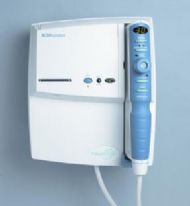The Eye Examination
UNDER CONTINUED CONSTRUCTION - CHECK BACK SOON
Each eye examination is personally tailored to your needs and will differ between every patient. Separate tests are carried out depending on the history of your eyes, previous findings, clinical findings during the examination and predisposing risk factors to various ocular conditions. You may encounter tests not detailed below and are unlikely to have every test carried out.
History and Symptoms
Most examinations will begin with a series of questions about your ocular and general health. These questions will help your optometrist to find out any problems you may be having with your eyes or glasses and allow him to assess possible risk factors of various eye complaints. The information gathered here is crucial in providing a thorough and personal eye examination.
Subjective Investigation
This is the part of an eye exam where your optometrist asks whether your vision is "better or worse" "with or without" lenses or "better with one two?". And you get to try on the famous "fashionable" frames (below).
A lot of people worry that there is little difference between lenses or that they are giving the wrong answer. There is nothing to worry about, your optometrist will already have an accurate picture of the power of lenses needed through earlier checks, so this is often just fine tuning the lenses. A lot of the options will be very similar and your optometrist will be glad to hear this as it means he's honing in on the final prescription.


Objective Investigation
These techniques include anything where the optometrist is assessing your eyes without asking you questions. Often bright lights are used, observing reflexes, reactions and movements of your eyes. This is very important in every exam but even more so in young children or those who struggle with the "subjective" section.
Fundoscopy
Here your optometrist will view the back of your eye or "fundus / retina". This is entirely painless and involves little more than a rather expensive torch with high powered focussing lenses and mirrors. Your optometrist will assess the blood vessels, the fundus, the optic nerve head (the spot where the brain meets the eye) and the macula (central vision area).
Conditions such as cataract, glaucoma, macula degeneration and many more will be looked for.

Tonometry
The "dreaded" puff of air, most patients remember having this done as not many are fond of it. A gentle puff of air is blown by the machine onto the front of the eye to measure the pressure within. High pressure is the main risk factor of glaucoma so this is checked in all patients over 35 years old or those considered at risk.
Rest assured our tonometer is gentle, as we use modern, handheld "Pulsair" tonometers as pictured below. This gives additional comfort and less of a shock.

Visual Field Assessment
Slit Lamp Anterior Eye Examination
 Michael Betts Opticians | sitemap | log in
Michael Betts Opticians | sitemap | log in
 Michael Betts Opticians | sitemap | log in
Michael Betts Opticians | sitemap | log in